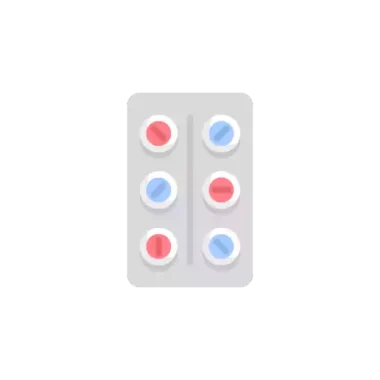Composition Acetic acid (1% w/v)
Rx Prescription Required
Pack bottle of 10 ml Ear Drop
Storage Store below 30°C
Chemical Class Carboxylic Acid Derivative
Action Class Antiseptics & Disinfectants
Habbit Forming
Manufacturer Macleods Pharmaceuticals Pvt Ltd
Manufacturer address Atlanta Arcade, Marol Church Road, Andheri (East), Mumbai – 400059, INDIA.

Otimac AC 1% Ear Drop
Otimac AC 1% Ear Drop is an anti-bacterial and antifungal agent. It is used for treatment of external ear infection. It helps in preventing the growth of bacteria and fungi, thereby reducing the pain and swelling in the ear.
Basic Info
Description
Otimac AC 1% Ear Drop is an anti-bacterial and antifungal agent. It is used for treatment of external ear infection. It helps in preventing the growth of bacteria and fungi, thereby reducing the pain and swelling in the ear.
Otimac AC 1% Ear Drop is for external use only. Before using the medicine, clean the ear properly by removing any crust/wax from the ear. Never use drops if the seal is broken before you use it for the first time. Wash your hands before using it. Follow the instructions given by your doctor and use it in the dose and duration suggested by the doctor. This medicine should be used regularly to get the most benefit from it. Do not stop using it until you have finished the complete course, even when you feel better. You can help the medicine work better by keeping the affected areas clean. In case of accidental contact with your eyes; rinse thoroughly with water. Do not use this medicine if you have a perforated or ruptured eardrum.
It may cause a burning sensation, irritation, and local reaction immediately following the application. However, these side effects are temporary and usually subside on their own. Inform your doctor if they persist for a longer duration. Do not use the open bottle for more than 4 weeks.
Consult a doctor before using Otimac AC 1% Ear Drop in children below the age of 3 years. Consult with your doctor if you are pregnant, planning to become pregnant or breastfeeding before using the medicine.
Uses
Ear infection
How To Use
This medicine is for external use only. Use it in the dose and duration as advised by your doctor. Check the label for directions before use. Hold the dropper close to the ear without touching it. Gently squeeze the dropper and place the medicine inside ear.
MOA
Otimac AC 1% Ear Drop belongs to the class of medications called antibacterial and antifungal agents. It works by maintaining the pH thereby preventing the growth of bacteria and fungi. Thus, Otimac AC 1% Ear Drop effectively treats ear infections.
What If
Q: What if you forget to take Otimac AC Ear Drop?
A: If you miss a dose of Otimac AC 1% Ear Drop, skip it and continue with your normal schedule. Do not double the dose.
Drug Tips
Take it as per dose and duration suggested by the doctor.
Do not touch the tip of the dropper to prevent contamination.
Stop using medicine and inform your doctor if you notice a rash, burning sensation or allergic reaction.
Avoid swimming and make sure the infected area does not get wet while bathing.
Avoid getting it in your eyes or mouth. If this happens, rinse with water immediately.
Take it as per dose and duration suggested by the doctor.
Do not touch the tip of the dropper to prevent contamination.
Stop using medicine and inform your doctor if you notice a rash, burning sensation or allergic reaction.
Avoid swimming and make sure the infected area does not get wet while bathing.
Avoid getting it in your eyes or mouth. If this happens, rinse with water immediately.
Faqs
Q. What are acetic acid ear drops used for?
Otimac AC 1% Ear Drop contains acetic acid which is effective in treating infections caused by bacteria or fungus in the ear canal. This medicine will not treat an inner ear infection.
Q. What should you inform your doctor before using Otimac AC 1% Ear Drop?
Before using this medicine, inform your doctor if you have a hole in your ear drum (ruptured ear drum).
Q. What should I watch for while using this medicine?
Inform your doctor if pain occurs during use, or if symptoms worsen or do not improve within 48 hours, or if your hearing becomes impaired.
Q. For how long shall I use Otimac AC 1% Ear Drop?
It is advisable not to use this medicine for more than 7 days or use it as prescribed by your doctor.
Q. Can Otimac AC 1% Ear Drop be used in children?
No, this medicine is not recommended for children under 12 years of age without medical advice.
Q. What are the precautions for ear infections?
It is important that you keep the infected ear(s) clean and dry. When bathing, try not to get the infected ear(s) wet. Apart from this, do not share ear products or towels, and washcloths with anyone else in order to prevent the spread of infection.
Benifits
In Ear infection
Otimac AC 1% Ear Drop is used to treat ear infections caused by microorganisms such as bacteria and fungi. It works by killing and stopping the growth of infection causing microorganisms, thereby clearing the infection. It also blocks the release of chemicals that cause symptoms such as itching, redness, swelling and ear discharge. Therefore this medicine relieves the inflammation due to these infections. You should use Otimac AC 1% Ear Drop for as long as it is prescribed, even if your symptoms disappear, otherwise they may come back. Depending on the type of infection you are treating, this may be several weeks. Even after your infection is completely cured, you may have to use it occasionally to prevent the symptoms from returning.
Side Effects
Burning sensation
Irritation
Local reaction
Safety Profile
Alcohol:
No interaction found/established
Pregnancy:CONSULT YOUR DOCTOR
Information regarding the use of Otimac AC 1% Ear Drop during pregnancy is not available. Please consult your doctor.
Breast feeding:CONSULT YOUR DOCTOR
Information regarding the use of Otimac AC 1% Ear Drop during breastfeeding is not available. Please consult your doctor.
Driving:
No interaction found/established
Kidney:
No interaction found/established
Liver:
No interaction found/established
Refferences
ScienceDirect. Acetic acid. [Accessed 03 Apr. 2019] (online) Available from: View






